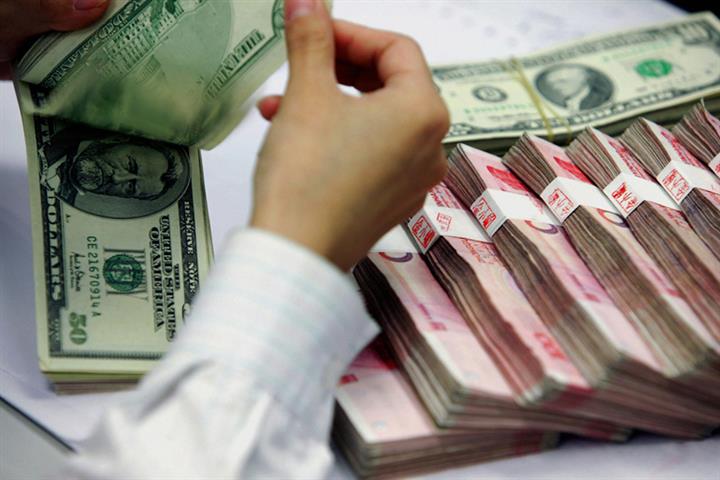 China’s Forex Reserves Fall to Near Four-Year Low on Dollar Strength, Asset Price Drop
China’s Forex Reserves Fall to Near Four-Year Low on Dollar Strength, Asset Price Drop(Yicai Global) Sept. 8 -- China’s foreign exchange reserves fell last month to the lowest level since October 2018 after the US dollar appreciated and global financial asset prices dropped, according to the latest official data.
China's forex reserves stood at USD3.055 trillion as of Aug. 31, down USD49.2 billion or 1.6 percent from a month earlier, data from the State Administration of Foreign Exchange showed yesterday. That compared with a market expectation for USD3.079 trillion.
Last month’s decline was mainly the result of exchange rate conversion and asset price changes, SAFE Deputy Director Wang Chunying said at a press conference.
It was a big drop, according to Xie Yaxuan, chief macro analyst at China Merchants Securities. Exchange rates can account for half, and the turmoil in global financial markets the rest, he said.
China’s foreign exchange reserves may fall below USD3 trillion in coming months amid dollar strength and global market turbulence, Xie added. The yuan will remain under pressure from the greenback, but will stay firm against a basket of currencies, he said.
Dollar Strength
As US interest rates soar, the US Dollar Index strengthened 2.6 percent last month, while stock and bond markets in developed countries fell amid expectations of further increases in borrowing costs.
In August, the euro fell 1.6 percent against the greenback, the British pound dived 4.5 percent, and the Japanese yen sank 4.1 percent. The Barclays Global Aggregate Total Return Index USD Hedged, an indication of the performance of other currencies versus the dollar, fell 2.6 percent.
Major stock market benchmarks were mainly down in the period. The S&P 500 Index lost 4.2 percent and the Stoxx Europe 50, which tracks blue chips in the eurozone, sank 5.1 percent. But Japan's Nikkei 225 Index gained 1 percent.
China's balance of payments data was positive in August, Wen Bin, chief economist at China Minsheng Bank, told Yicai Global. Foreign direct investment into the country is expected to maintain a net inflow, providing strong support to the balance of payments along with the surplus in trade in goods, Wen added.
China’s trade surplus jumped 34 percent to USD79.4 billion last month from a year ago, according to data from the General Administration of Customs. But it was USD21.9 billion down on July. A monthly surplus of more than USD80 billion has only happened five times before, Wen said.
PBOC Restraint
Despite the pressures, Xie at China Merchants Securities believes the central bank will not rush to support the yuan. Since 2018, the People’s Bank of China has increasingly emphasized avoiding direct intervention, he said.
Keeping the yuan at 7 against the dollar is not a line that must be held, Xie said. The last time the yuan fell to 7.19, the US Dollar Index was only slightly above 100. Now it is almost 110, reflecting the fact that the redback is much stronger than other non-dollar currencies, he added.
The yuan’s depreciation against the dollar does not reflect China’s economic fundamentals, Xie pointed out. Compared with the start of this year, the yuan is still appreciating against the euro and the yen and remains strong against a basket of currencies.
Editors: Tang Shihua, Emmi Laine, Xiao Yi